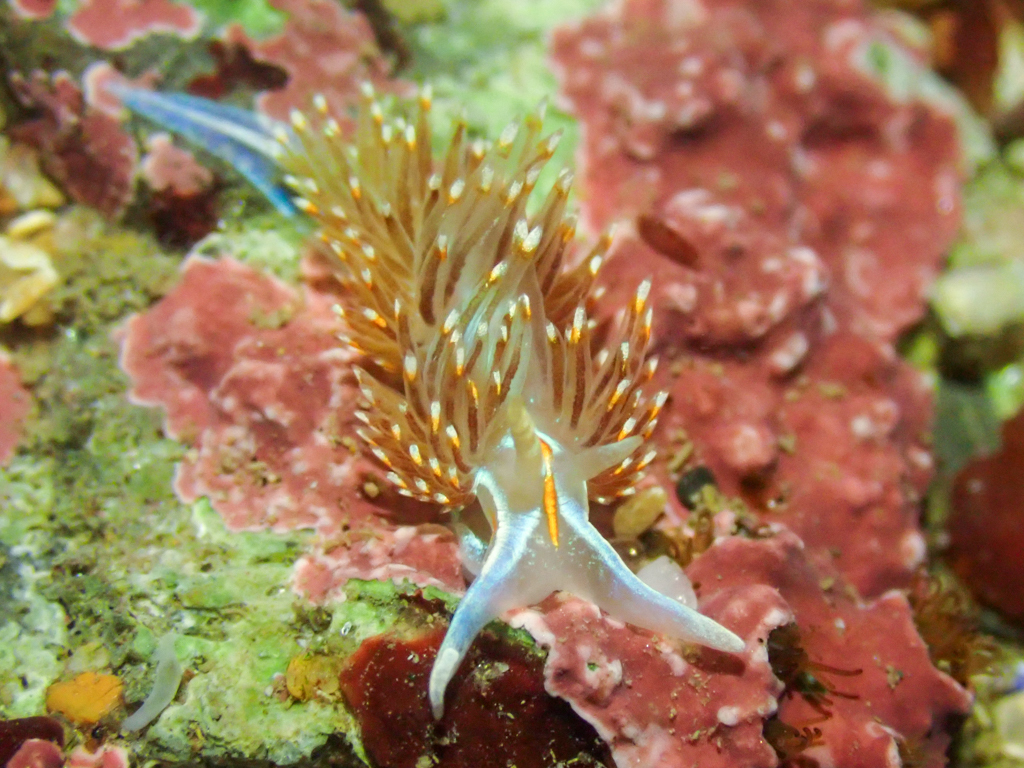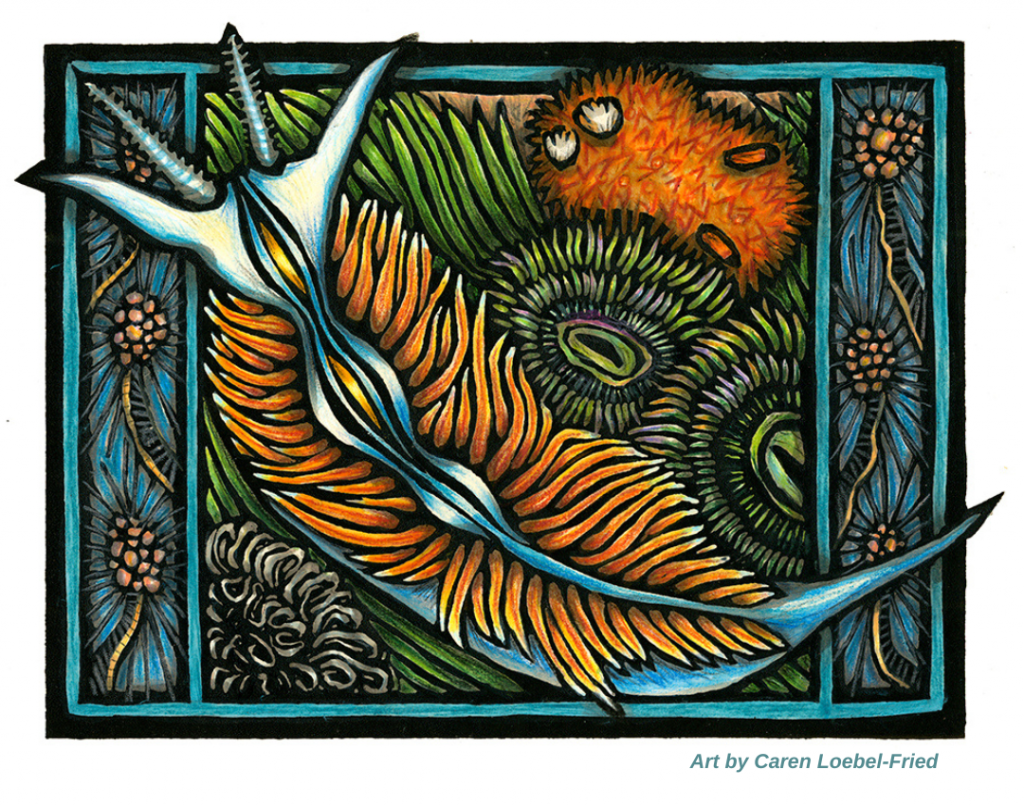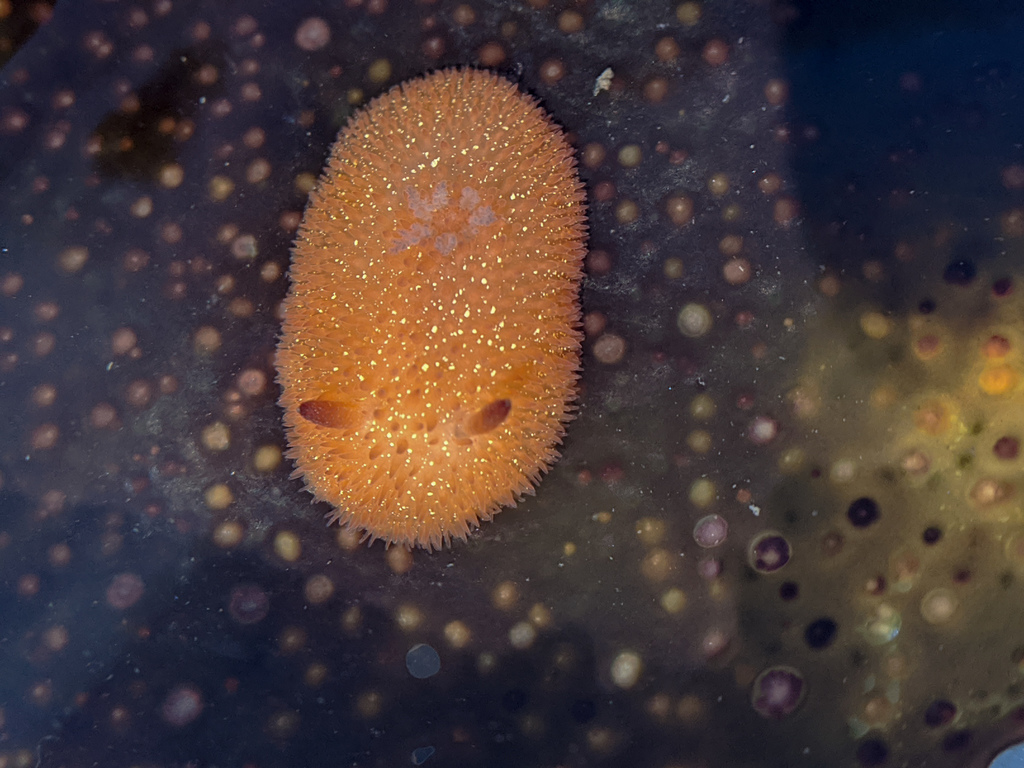Nudibranch

PBC’s Earth Honoree of 2023: Nudibranchs
3,000 nudibranch species can be found all over the world and come in a wide variety of shapes and colors. The color of the creatures often depend on what they have eaten.
How To Recognize A Nudibranch
Nudibranchs are shell-less, bilaterally symmetrical marine slugs, also known as “sea slugs”, and most of their lives are spent as a veliger, their first life stage, which is microscopic. Inside the mouth of the nudibranch is a buccal bulb, which includes the radula, a ribbon of teeth for scraping or grasping food, like a tongue with many rows of teeth. The radula extends out to grab or bite food and brings it into the mouth. Nudibranchs also have a Rhinophore at the front of their body, which is a specialized organ that senses chemicals dissolved in the surrounding water and is also used to find food.
These unique creatures also have long, cylindrical, tapered oral tentacles on either side of their mouths. These “feelers” help them sense their surroundings and aid in their movement. Their eyes can only perceive light and dark. Nudibranchs detect threats from predators by using their eyes to sense shadows.
Some species of nudibranchs have horn-like projections on their backs called cerata that serve as their digestive and respiratory organs. The cerata are filled with blood and a duct of the digestive gland. That is why the color of the creature often depends on what it has recently eaten!
Some species of nudibranchs can also regenerate their body parts that have been lost/torn due to predators or injury.
Where To See & Find Them
Nudibranchs are almost always found in salt water and range from intertidal zones to over 700m (2,300ft) below sea level. The species of nudibranchs found in the Bay Area are referred to as living in the “Eastern Pacific,” as in the Pacific Ocean.
The region from just north of Pacifica to around Half Moon Bay is revered around the world for its nudibranch abundance and diversity, making us an area of key scientific importance when studying the effects of global climate change on our oceans.

Climate Threats & What You Can Do To Help
Nudibranchs are not only striking and unique animals, they are also indicators of ocean health and global climate change, and their population numbers and shifting range are being used by scientists to study the effects of global climate change and locally warming oceans.
You can help save these important creatures by helping prevent pollution from reaching the intertidal zones where these creatures live, which are located near rocky shores and beaches. Join us for a Beach Cleanup and help us keep nudibranchs safe and happy!

